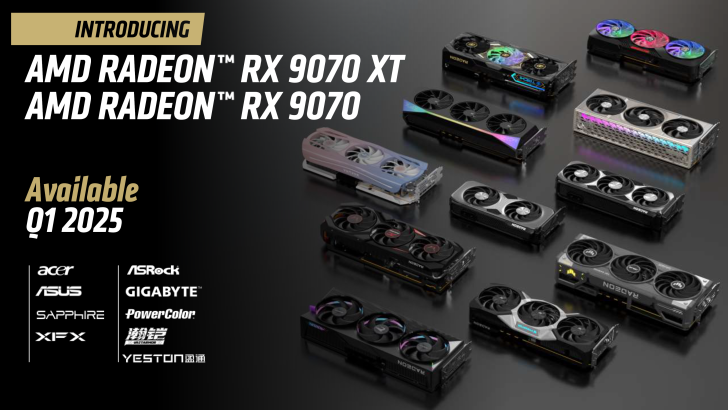
At CES 2025, AMD unveiled new Ryzen 9000 Series Processors as well as their upcoming RDNA 4 GPUs.
On the announcement of these new components, Jack Huynh, senior vice president and general manager of the Computing and Graphics group at AMD, said, “Gaming has become one of the biggest forms of entertainment around the world, with titles becoming more immersive and demanding, having the right hardware and software is critical for the best player experience…Today’s announcements underscore our commitment to providing gamers everywhere the freedom to choose their own gaming experiences without being held back by performance bottlenecks.”
Table of Contents
New Ryzen 9000 Series X3D Processors
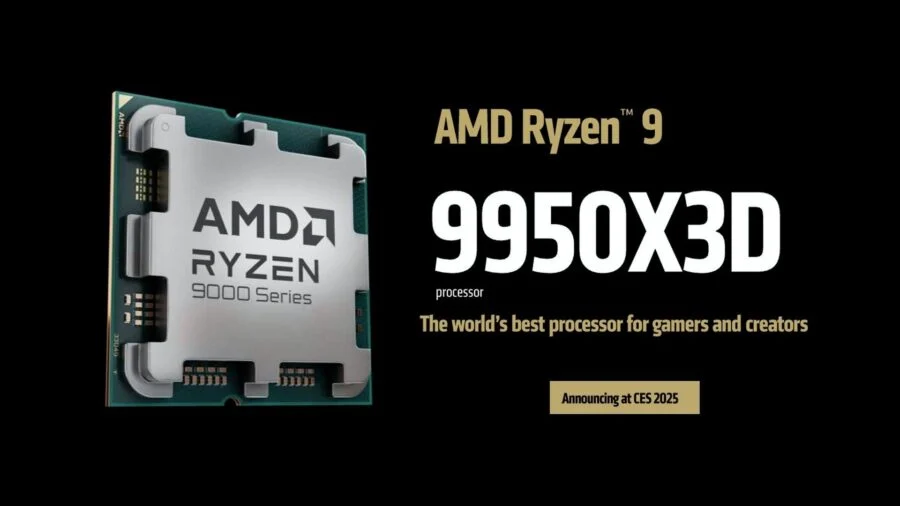
AMD is adding to it’s portfolio of excellent Ryzen 9000 series desktop processor with the new high end AMD Ryzen 9 9950X3D and 9900X3D.
The Ryzen 9950X3D is touted as the world’s best 16 core processor for gamers and content creators. It features 16 Zen 5 CPU cores and AMD RDNA 2 graphics. It utilizes the 2nd Gen AMD 3D V-Cahce technology, pushing performance to new heights.
These new generation X3D processors work by relocating the cache memory to below the core complex die (CCD), placing “Zen 5” cores close to your CPU cooler, which allows the CPU to deliver faster clock speeds at lower temperatures. The result is even better performance compared to previous generation X3D processors.
While no exact launch date was provided for these processors, AMD said they are expected to be on shelf in March 2025. So be on the look out for those in our gaming desktops soon in March.
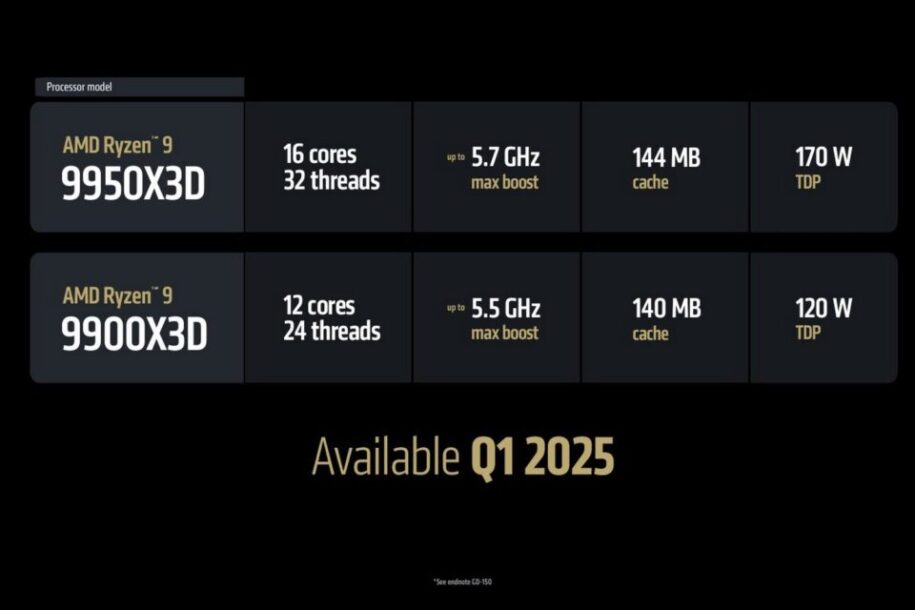
AMD Ryzen 9 9950X3D
The AMD Ryzen 9950X3D features 16 cores and 32 threads, with a base clock speed of 4.3 Ghz and boost speeds up to 5.7 Ghz. It features a whopping 144MB of cache (thanks 3D V-cache) and has a TDP of 170W.
AMD Ryzen 9 9900X3D
The AMD Ryzen 9900X3D features 12 cores and 24 threads, with a base clock speed of 4.4 Ghz and boost speeds of up to 5.5 Ghz. This one features 140MB of total cache and a slightly lower TDP of 120W.
RDNA 4 GPUs
The first of AMD’s new RDNA 4 graphics card lineup were announced with the reveal of the Radeon RX 9070 XT and RX 9070. Utilizing their new generation of RDNA architecture, these graphics cards are aimed at providing performance levels up to their own high end card of their last generation lineup, the Radeon RX 7900XT – and Nvidia’s RTX 4070 Ti Super.
RDNA 4 GPUS – New Naming Scheme
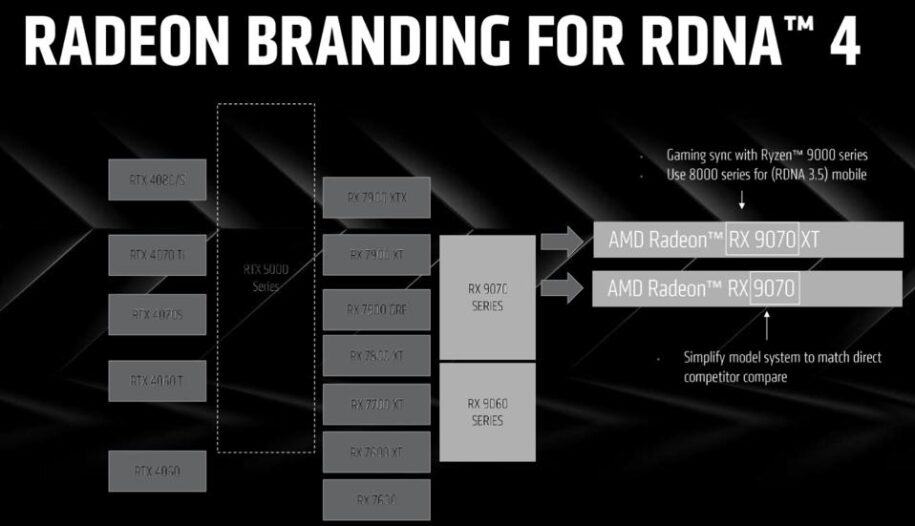
AMD has simplified their branding for RDNA 4 graphics cards. It seems to offer easier direct comparison to Nvidia’s similar-performing models. The RX 9070 XT competes with the RTX 4070 Ti Super and RTX 4070 Ti. While the RX 9070 goes toe-to-toe with the RTX 4070 and 4070 Super.
This points towards AMD positioning their Radeon graphics cards as powerful options in the midrange and budget PC market. We could see higher end graphics cards, like a 9080 announced in the near future, but for now the RX 9070 family is all that has been revealed.
The new RDNA 4 graphics architecture brings several improvements, including faster graphics performance, more powerful AI processing, and AMD’s third-generation ray-tracing accelerators.
RDNA 4 GPUs Architecture: What’s New
AMD didn’t give a full deep dive into everything that is new with their latest RDNA 4 architecture.
But from the information they did provide, RDNA 4 architecture looks to be a great improvement over last generation RDNA 3 that is found in RX 7000 Series graphics cards.
RDNA 4 is built on a new 4-nanometer manufacturing process. This brings with it faster clock speeds and shader improvements that you would expect with new gen graphics card.
Additionally, AMD said that RDNA4 GPUs have new 3rd generation ray tracing accelerators, which provide considerable improvement over their last generation ray tracing solution.
New AI features were given a spotlight by AMD. New second gen AI technology is used to power a variety of AI software utilities that will launch alongside the new Radeon 9000 Series graphics cards. For gamers, the most exciting of these features to point out is the newest version of AMD’s FSR technology, called FSR 4.
FSR 4 uses machine learning to upscale lower resolution content to 4K while maintaining high image fidelity. It also adds AMD’s own frame generation to help further boost performance which works in tandem with their Anti-Lag 2 tech to help reduce input latency.
Interesting to note that unlike previous generations of FSR technologies, FSR 4 is NOT backwards compatible with previous graphics cards. FSR 4 tech will only work on AMD Radeon 9000 series graphics cards.
Release Date and Price
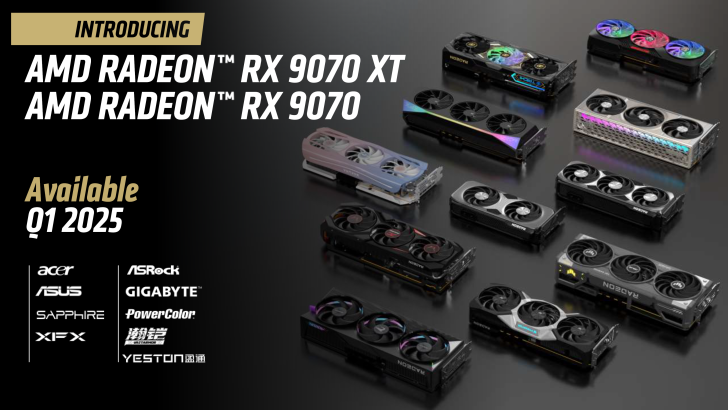
Currently AMD is being tight lipped with their upcoming RX 9070 and RX 9070XT graphics cards. They were vague with details regarding their RDNA4 cards – with pricing not being announced.
However, they did say to expect to see these cards available in Q1 2025, so expect a concrete launch date in the near future. RDNA 4 GPUs will be available in our gaming PCs from launch – stay tuned!